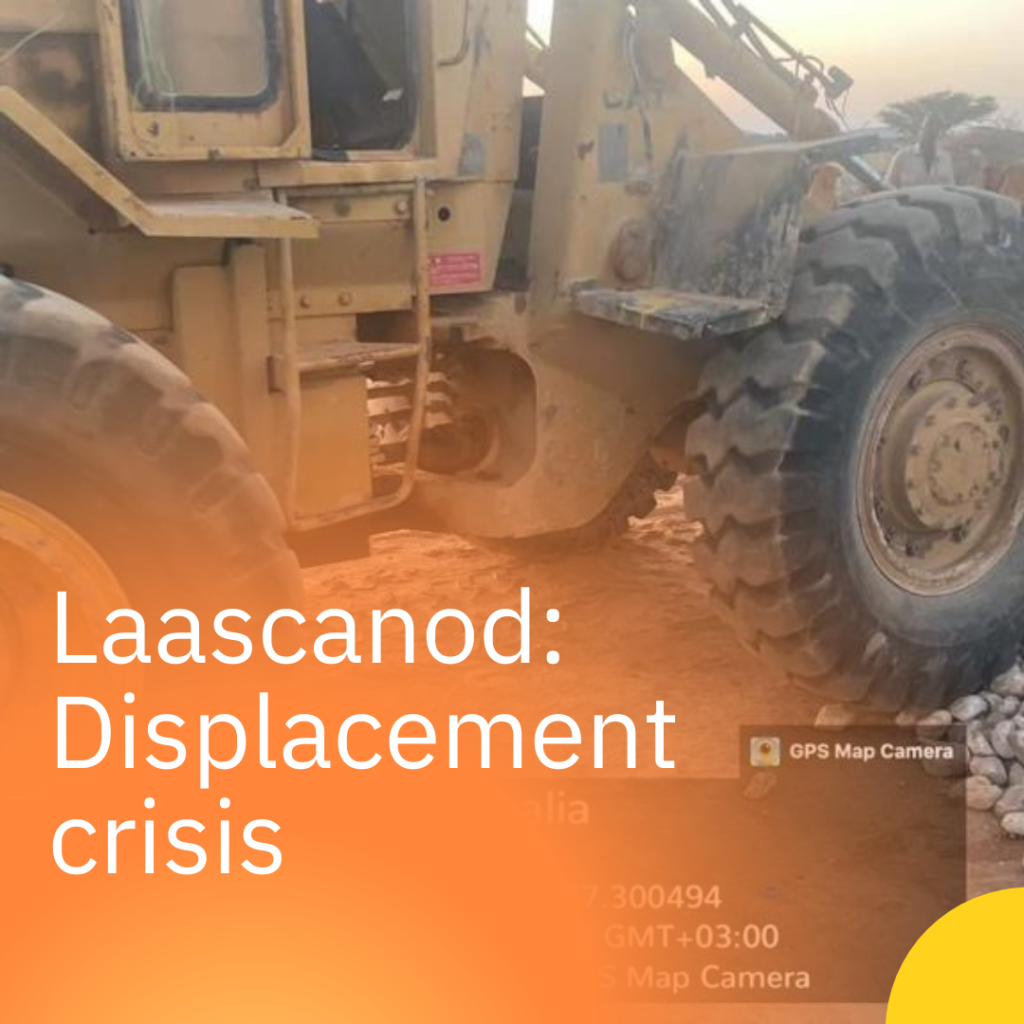Introduction
The conflict in Laascanod has inflicted immense suffering on the civilian population, with displacement emerging as one of the most pressing humanitarian crises. The forced displacement of thousands of people has had a devastating impact on their lives, livelihoods, and access to basic necessities. This article examines the causes, consequences, and challenges associated with the civilian displacement crisis in Laascanod.
The Roots of Displacement
The conflict between Somaliland and the SCC-Khaatumo state has created a volatile environment that has forced countless civilians to flee their homes. The indiscriminate nature of the fighting, coupled with the targeting of civilian infrastructure, has rendered many areas uninhabitable. Fear of violence, loss of livelihoods, and the destruction of homes have compelled people to seek refuge in safer locations.
Furthermore, the conflict has exacerbated existing vulnerabilities within the region. Drought, poverty, and a lack of access to basic services were already prevalent challenges before the outbreak of hostilities. These factors have compounded the displacement crisis, as people who were already struggling to survive have been pushed to the brink.
The Human Cost of Displacement
The displacement of civilians has far-reaching consequences for individuals, families, and communities. The immediate impact includes the loss of homes, livelihoods, and social networks. Displaced people often find themselves in precarious living conditions, with limited access to food, water, shelter, and healthcare. Children are particularly vulnerable to the effects of displacement, facing increased risks of malnutrition, disease, and disruption to their education.
Moreover, displacement can have a profound psychological impact on survivors. The trauma of witnessing violence, losing loved ones, and being forced to flee their homes can lead to long-term mental health issues. Women and girls are at heightened risk of gender-based violence, exploitation, and abuse in displacement settings.
The displacement of civilians has had a devastating impact on individuals and communities. The abrupt disruption of livelihoods, loss of property, and separation from family members have caused immense suffering.
- Psychological trauma: The experience of fleeing one’s home under threat of violence can have long-lasting psychological consequences, including post-traumatic stress disorder (PTSD), anxiety, and depression.
- Limited access to basic needs: Displaced populations often face challenges in accessing essential services such as food, water, shelter, and healthcare. This can lead to malnutrition, disease outbreaks, and increased vulnerability to exploitation.
- Vulnerable groups at risk: Women, children, and the elderly are particularly vulnerable during displacement. They face heightened risks of violence, exploitation, and abuse.
- Disruption of education: The closure of schools due to the conflict has disrupted the education of countless children, with potential long-term consequences for their future.
Humanitarian Response Challenges
The humanitarian community has faced significant challenges in responding to the needs of the displaced population in Laascanod. The ongoing conflict has hindered access to affected areas, making it difficult to deliver aid and assistance. Security concerns, bureaucratic hurdles, and limited resources have further hampered the response efforts.
Additionally, the vastness of the affected region and the rapid influx of displaced people have strained the capacity of humanitarian organizations to provide adequate support. Coordination and collaboration among different actors are essential to ensure an effective response, but achieving this in a complex and volatile environment is challenging.
Challenges and Obstacles
Several factors hinder the humanitarian response and exacerbate the suffering of displaced populations:
- Insecurity: The ongoing conflict creates a dangerous environment for aid workers, limiting their ability to access affected areas.
- Limited resources: The scale of the displacement crisis exceeds the available resources, leading to gaps in aid delivery.
- Coordination challenges: Multiple agencies are involved in the humanitarian response, and effective coordination is essential to avoid duplication of efforts and ensure efficient aid distribution.
- Durable solutions: Addressing the root causes of the conflict is crucial for finding durable solutions to the displacement crisis. This includes promoting dialogue, reconciliation, and peacebuilding efforts.
The Road to Recovery
Addressing the civilian displacement crisis in Laascanod requires a comprehensive approach that focuses on both immediate humanitarian needs and long-term recovery and stabilization. Providing life-saving assistance, including food, water, shelter, and healthcare, is crucial to prevent further suffering and loss of life.
In the longer term, efforts should be directed towards creating conditions for safe and voluntary return or sustainable integration for the displaced population. This includes rebuilding destroyed homes, restoring essential services, and supporting livelihoods recovery. Addressing the root causes of the conflict is also essential to prevent future displacement and create a lasting peace.
Conclusion
The civilian displacement crisis in Laascanod is a stark reminder of the human cost of conflict. The suffering endured by the displaced population is immense, and the challenges facing humanitarian responders are daunting. A concerted effort by the international community, government authorities, and humanitarian organizations is needed to address the immediate needs of the displaced and to build a path towards recovery and resilience.

